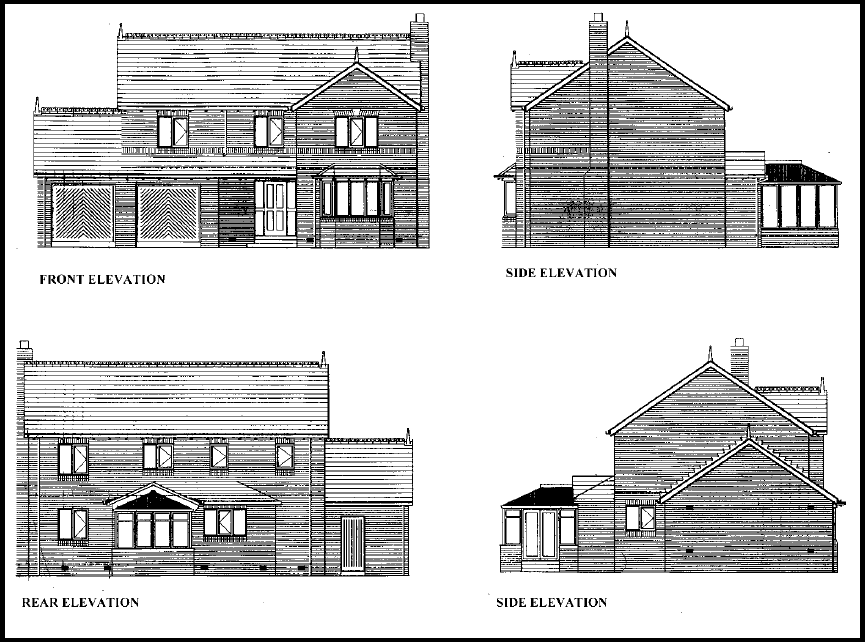What Does Elevation Mean in Interior Design
We use cookies to ensure we give you the best experience on our website. You can find out about our cookies and how to disable cookies in our Privacy Policy. If you continue to use this website without disabling cookies, we will assume you are happy to receive them. Close.

Elevations

[edit] Introduction
Orthographic projection is a technique for drawing a three dimensional object in two dimensions, by 'projecting' its surfaces into a two dimensional representation, where the projection lines are orthogonal to (perpendicular to) the projection plane (that is, there is no foreshortening or perspective).
In the construction industry, the term 'elevation' refers to an orthographic projection of the exterior (or sometimes the interior) faces of a building, that is a two-dimensional drawing of the building's façades. As buildings are rarely simple rectangular shapes in plan, an elevation drawing is a first angle projection that shows all parts of the building as seen from a particular direction with the perspective flattened. Generally, elevations are produced for four directional views, for example, north, south, east, west.
Simple elevation drawings might show:
- The outline of a building.
- Openings such as doors and windows.
- Roofing.
- Projections such as eves and pipes.
- Level datums such as finished ground level and floor positions.
- Key dimensions such as wall lengths and heights.
- Exterior features such as decks, porches and steps.
- Any portion of the foundation that may be visible.
- Exterior wall and roof finishes.
However, they can contain a great deal of detail depending on the reason for their preparation. While insufficient information on elevations can mean that they do not properly satisfy the need for which they were prepared, very detailed elevations can be time-consuming and expensive to prepare. It is important therefore that the reason for the drawing is clear and the level of detail required is specified.
Elevations might be prepared for a number of reasons, including:
- As part of a survey of existing buildings.
- To create a record of a building.
- To explore and communicate interior and exterior design options.
- To communicate construction information.
- As part of an application for planning permission.
- As part of an application for building regulations approval.
- For sales and marketing.
Historically, buildings have been drawn by hand on two dimensional paper, and so orthogonal projection and the drawing of two dimensional plans and elevations have been the standard means of representation. However, increasingly, buildings are being drawn using computer aided design (CAD) or building information modelling (BIM) software that represents them in three dimensions. Two-dimensional elevations can be generated from these 3D models, but they do not need to be drawn individually.
[edit] Alternative meaning
The term 'elevation' might also be used to refer to the height of something above or below a fixed reference point or datum.
[edit] Related articles on Designing Buildings Wiki
- Active frontage.
- As-built drawings and record drawings
- Assembly drawing.
- Building information modelling.
- CAD layer.
- Component drawing.
- Computer aided design.
- Concept drawing.
- Detail drawing.
- Engineering drawing.
- Exploded view.
- Façade.
- Floor plan.
- General arrangement drawing.
- How to draw a floor plan.
- Installation drawings.
- North American Paper Sizes
- Notation and symbols.
- Orthogonal plan.
- Paper sizes.
- Principal elevation.
- Production information.
- Projections.
- Scale drawing.
- Shop drawings.
- Site plan.
- Standard hatching styles for drawings.
- Superelevation.
- Technical drawing.
- Techniques for drawing buildings.
- Types of drawings for building design.
- Working drawing.
[edit] External references
- The House Plans Guide – Elevation drawings
What Does Elevation Mean in Interior Design
Source: https://www.designingbuildings.co.uk/wiki/Elevations

0 Response to "What Does Elevation Mean in Interior Design"
Post a Comment